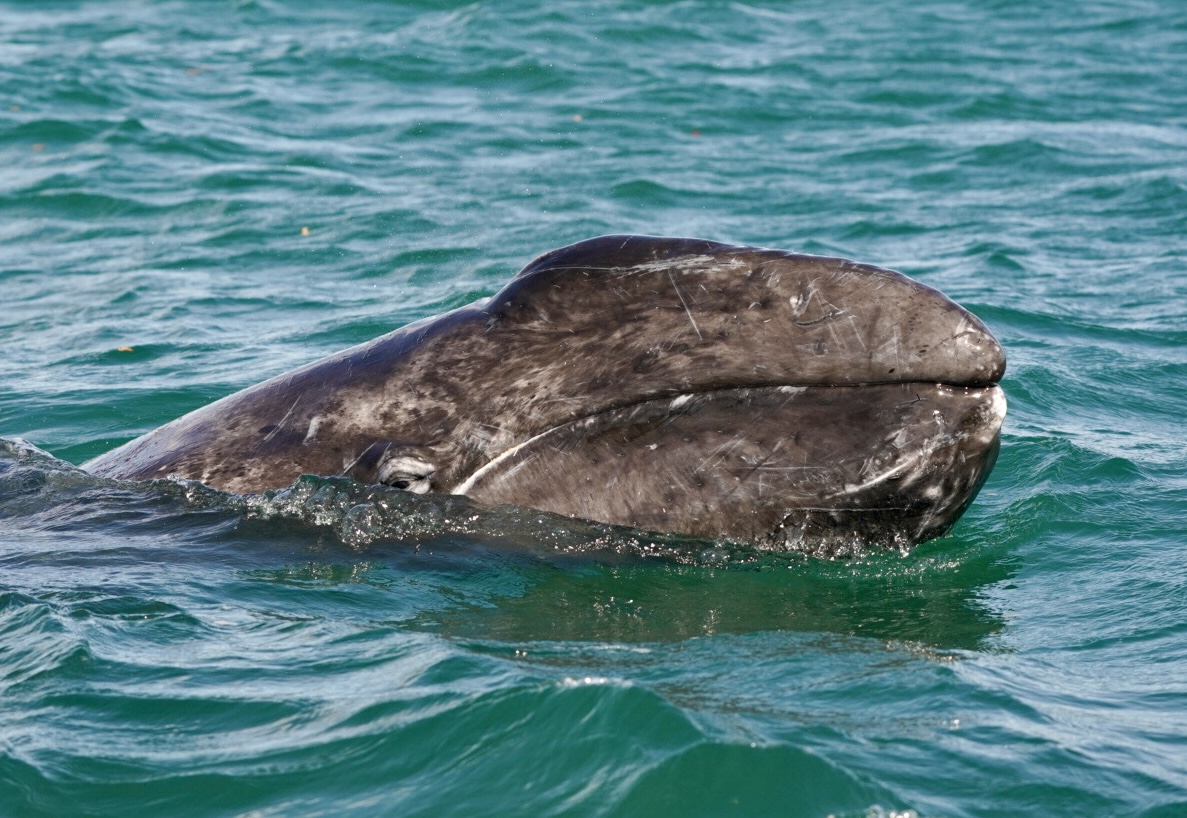“Seen Any Whales Today?”
Volunteers and rangers learning together
May 5, 2025__|__Ellen Greenblatt
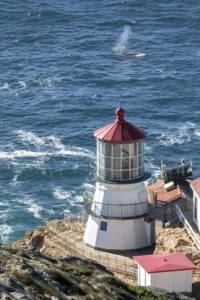
NPS / A. Kopshever
“Seen any whales today?” That’s invariably the first question visitors arriving at the Observation Deck overlooking the Point Reyes Lighthouse ask the ranger or volunteer on duty. If we are all lucky, whales will be passing by, and the welcoming ranger will point our attention in the right direction, encouraging us to use the scope they have set up or binoculars to take a closer look. Without their guidance, most of us might miss the whales completely—our eyes are not trained in the same way theirs are.
How do our Point Reyes National Seashore rangers know so much? A combination of undergraduate and graduate education, volunteering, and just plain looking and listening to the world around them is a start. But their deep knowledge of this place goes far beyond that. Sharing experiences, ideas, and curiosity with each other and volunteers continues to build their knowledge base, which leads them to ask even more questions of each other and of what they see. And, of course, they continue to read and study.
They’re on a never-ending quest for more knowledge.
Visiting the whales
Occasionally, a spectacular learning opportunity presents itself. This past February, two Point Reyes rangers (paying their own way and using vacation time) joined two Point Reyes winter wildlife docents on a six-day whale exploration trip, led by American Cetacean Society Naturalist Joey Heusler. Joey, who started as a winter wildlife docent volunteer eighteen years ago, knows well the important learning that occurs when Park staff and volunteers collaborate.
I was one of the winter wildlife docents along for the learning as we spent time in an eco-camp on the edge of the San Ignacio Lagoon in Baja California. Located in El Vizcaino Biosphere Reserve, San Ignacio Lagoon is one of the breeding grounds of the gray whales that pass by the Point Reyes Lighthouse twice a year on their migration to and from Baja and Alaska.
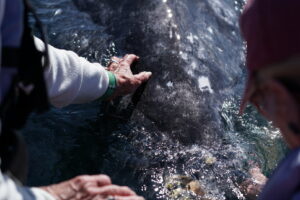
After we settled into our basic accommodations (cabins with sawdust toilets right on the edge of the lagoon), local guides (pangueros) took us into the lagoon on small boats (pangas). We took excursions twice daily to see the gray whales and their calves. Because the Mexican government carefully protects these large breeding lagoons, the number of pangas allowed is strictly regulated, and each excursion had a time limit of two hours.
Despite the sometimes rough water and choppy ride, two hours always felt too short as we sat together, scanning the water, looking for tell-tale spouts or tails. (As we learned, gray whales have no dorsal fins, one way to distinguish them from other whales.) Our pangueros became more than guides—they became our heroes. The exhilaration that comes from seeing a spout from the Lighthouse is undeniable, but the euphoria of having these gigantic mammals cavorting so close to us was beyond what we had expected.
During the winter wildlife docent trainings each fall, new and returning docents learn from rangers, marine biologists and ecologists like Point Reyes’ own Sarah Allen and Sarah Codde, and experts like Sonoma State’s Dr. Dan Crocker. The invaluable academic and field information these experts offer sparks free-wheeling conversations where volunteer docents share their own reactions and experiences. But, of course, learning in the Red Barn classroom about the behavior of gigantic mammals (I love the term “charismatic megafauna”) like elephant seals and whales cannot begin to generate the same excitement as learning in the field.
First-hand learning
Seeing whales off the Lighthouse, even close in, did not prepare us for encountering “friendlies” in the lagoon. For reasons that no one can explain, some, but not all gray whale mothers are called “friendlies” because they bring their calves to the side of the panga. They lifted their 10-ton babies up so that we lucky few could touch them and see, up close, the barnacles that bejewel them.
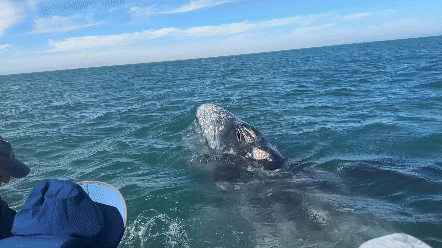
One surprising fact that we learned and will be able to share with Point Reyes visitors is that when the whales exhaled close to us, we heard the sound and saw the spray, but they didn’t have “bad breath”—there was no unpleasant odor. Joey explained this was because the whales don’t eat in the breeding lagoons. Unlike other whales that feed on plankton or fish in the water column, gray whales feed by sifting the mud and sediment at the bottom of the sea through their baleen. When they arrive in their feeding grounds in Alaska and start chowing down on arthropods, their breath changes, and traveling so close to them would certainly be less pleasant!
“Spy hopping,” is another phenomenon that thrilled and fascinated us. Gray whales and other cetaceans occasionally rise several feet perpendicularly out of the sea—similar to a submarine periscope going straight up. One hypothesis for this behavior is obvious—the whales are curious creatures that want to look around. Another hypothesis is that they want to hear the surf better for navigating. Whatever the reason, a spy-hop inevitably evoked appreciative “oohs” and “aahs” from us all.
Collaborative curiosity
After our time on the San Ignacio Lagoon, we spent a day off Loreto in the Sea of Cortés, where huge pods of Pacific white-sided dolphins gracefully soared over the water, enchanting us. One of the reasons they do this is simply to express excitement and to socialize, and they evoked the same reactions in us onlookers. We had hoped to see blue whales up close, but all we were able to see was their recognizably tall spouts which, we learned, can reach 30 feet in the air. Even that brief encounter will help us inform visitors to the Lighthouse Observation Deck how to identify different whales they might be seeing.
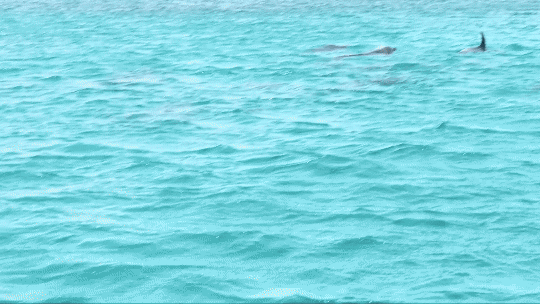
Many whale-watchers will attest that their love for these creatures began on the Lighthouse Observation Deck, where rangers and volunteers collaborate to make visitors’ experiences as rich as possible. Those of us who were fortunate enough to learn about whales first-hand will take what we saw and learned and share it widely, not only with visitors but with our fellow volunteers and rangers—feeding the perpetual curiosity that keeps bringing us all back to the Park.
May the learning and collaboration continue.
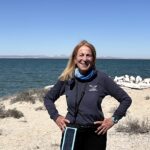
Ellen Greenblatt lives in Berkeley and is a college counselor and writing coach. She volunteers at Point Reyes National Seashore as a winter wildlife docent and trail rover. Interested in becoming a winter wildlife docent? Learn more here.

